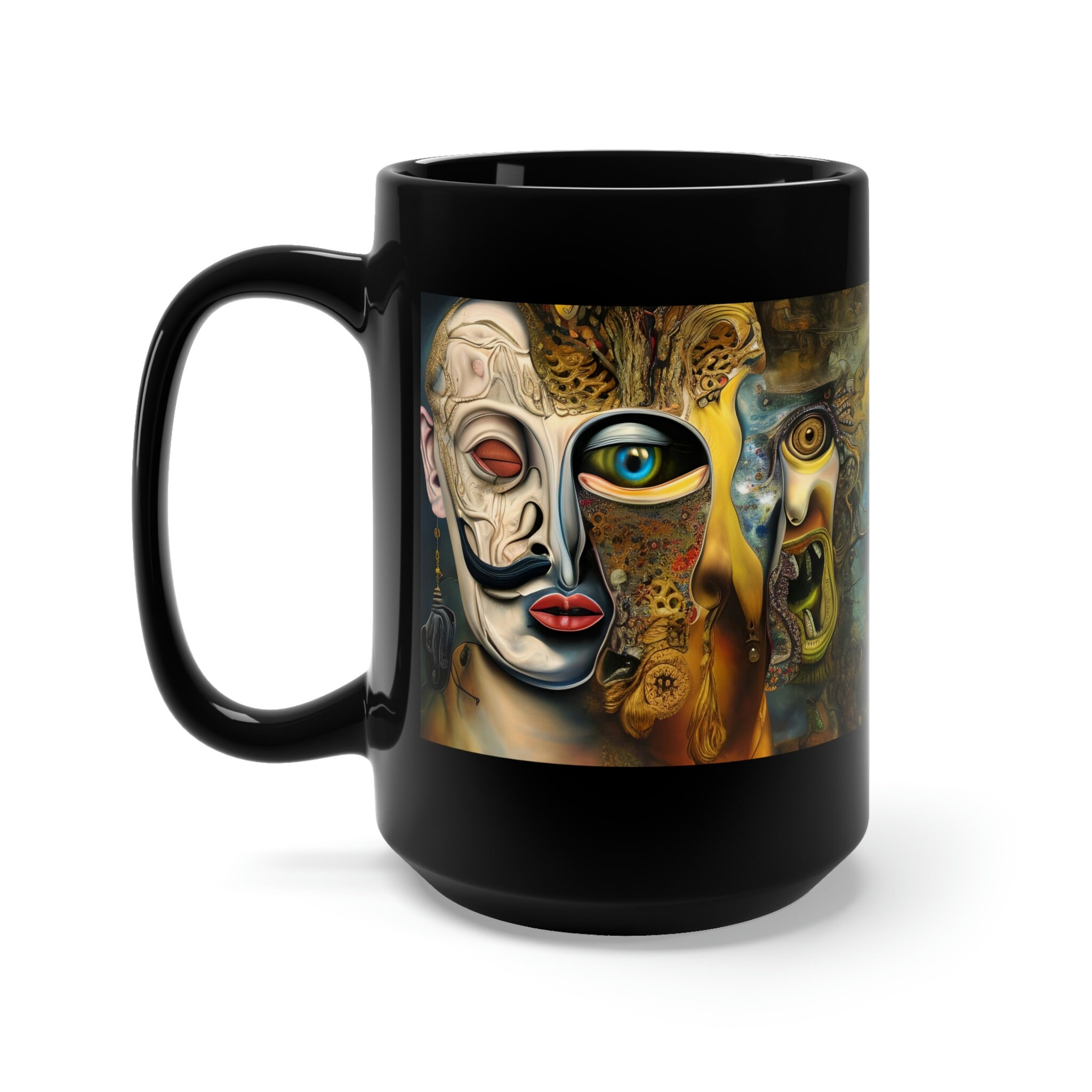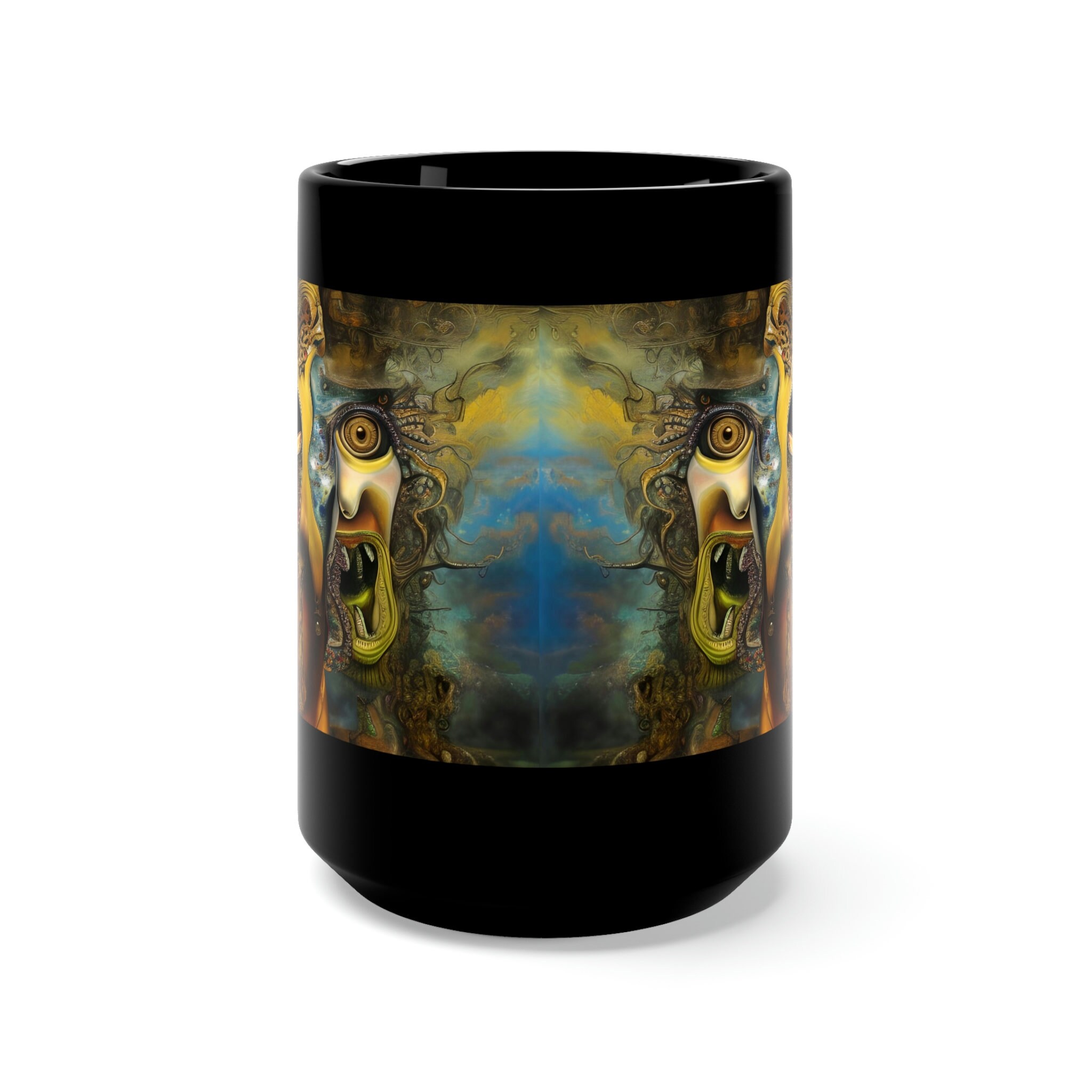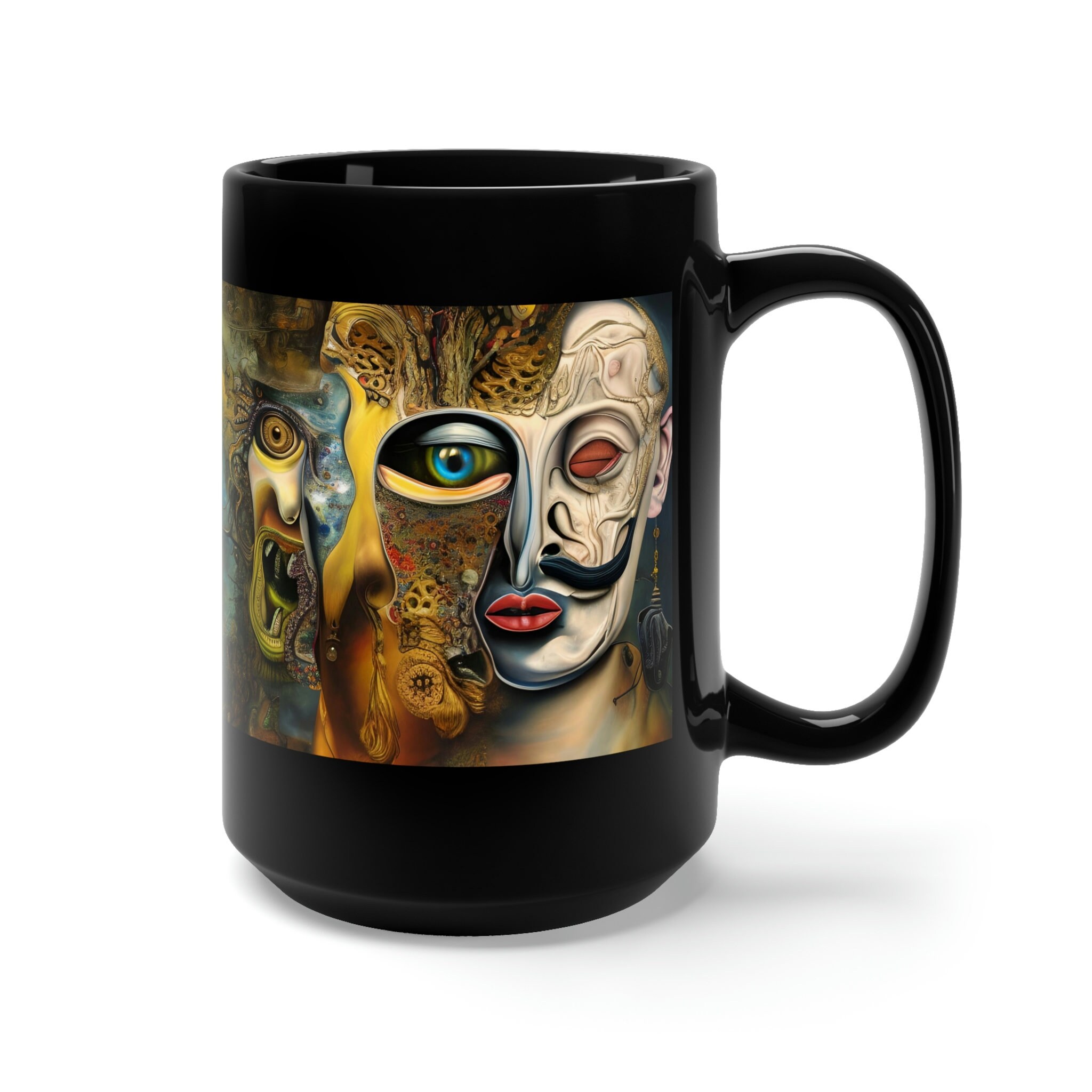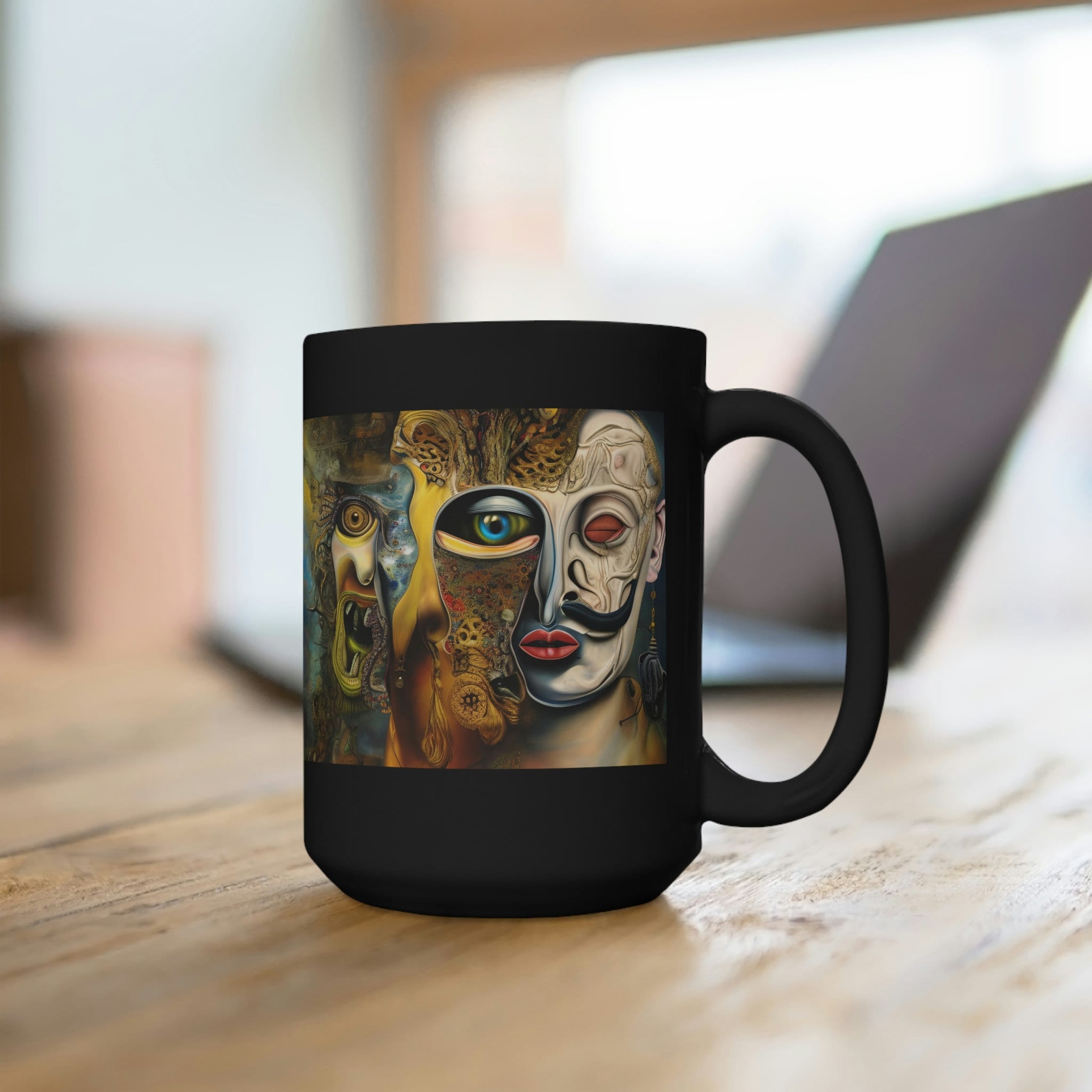"Duality of Self" is a captivating and thought-provoking painting that delves into the complex nature of human identity, drawing inspiration from the classic tale of Dr. Jekyll and Mr. Hyde. The artwork allows the viewer to fully immerse themselves in the intricate details and symbolism woven throughout the piece.
The painting is divided into distinct sections, with the left side dominated by a dark, smoky background, shrouded in an air of mystery and intrigue. The right half of a white man's face emerges from the shadows, appearing to be in a peaceful slumber. Adorned with ritualized tribal scarring, his face hints at a deep connection to ancient cultures and traditions. His black handle-bar mustache and long dangling earring add a touch of sophistication and worldliness to his countenance.
Moving towards the center of the painting, the viewer encounters a series of symbolic transition imagery, crafted to guide the eye and mind into the dual nature of the human experience. The imagery is open to interpretation, allowing each viewer to discover their own meaning and significance within the piece.
The left half of a monstrous human face appears on the right side of the painting, a stark contrast to the composed and peaceful visage on the left. This grotesque figure is equipped with a golden eye that seems to pierce through the viewer, a remnant of a top hat, and a gaping mouth filled with a few large, menacing teeth. The monstrous visage is a clear nod to the darker side of human nature, as exemplified by the character of Mr. Hyde.
As the viewer's gaze shifts further to the right, the background transitions from darkness to a bright and uplifting blue, adorned with wisps of yellow, white, and brown. The stark contrast in the backdrop reflects the duality of the human experience, a constant battle between light and dark, good and evil.
"Duality of Self" is a powerful and evocative painting that invites the viewer to question their own identity, the masks they wear, and the dual nature of their existence. The artwork serves as a poignant reminder that within each of us lies the capacity for both great kindness and unspeakable darkness, a theme that has captivated audiences for centuries in the tale of Dr. Jekyll and Mr. Hyde.
Never run out of your favorite hot drink! Bigger size durable ceramic mug in always fashionable black color. High quality sublimation printing makes it an appreciated gift to every true coffee or tea lover, who always asks for a refill.
.: Black ceramic
.: 15 oz (0.44 l)
.: Rounded corners
.: C-handle
Shipping from United States
Processing time
1-7 business days
Customs and import taxes
Buyers are responsible for any customs and import taxes that may apply. I'm not responsible for delays due to customs.
Payment Options
Returns & Exchanges
I gladly accept returns and exchanges
Just contact me within: 14 days of delivery
Ship items back to me within: 30 days of delivery
I don't accept cancellations
But please contact me if you have any problems with your order.
The following items can't be returned or exchanged
Because of the nature of these items, unless they arrive damaged or defective, I can't accept returns for:
- Custom or personalized orders
- Perishable products (like food or flowers)
- Digital downloads
- Intimate items (for health/hygiene reasons)
Conditions of return
Buyers are responsible for return shipping costs. If the item is not returned in its original condition, the buyer is responsible for any loss in value.
Frequently Asked Questions
What is All-Over-Print (AOP)?
All-Over Print (AOP) is a printing method that uses dye-sublimation to print a design onto polyester. During the dye sublimation process the dye is absorbed into the fabric. Since, it is not printed on the surface, like most t-shirts, it provides for a fantastic soft-to-the-touch feel and superior breathability.
AOP is a more time consuming method than screen printing or direct-to-garment (DTG) printing, so the prices are higher and the production times are longer, but the results are most definitely worth it.
Advantages of AOP:
The design won't peel off, unlike typical screen printing.
The design is part of the fabric of the item, so it will last as long as the item does.
The intensity of color is often unmatched.
What is Giclée?
Giclée (pronounced zhee-CLAY or often gee-CLAY) is a printing process that creates a museum quality, archival print. Special acid-free, paper is printed with fade resistant ink using a state-of-the-art, large format inkjet printer.
What is a gallery wrap canvas?
Gallery wrap is a style of displaying a canvas that doesn't show any visible staples or nails holding the fabric to the wooden stretcher bars. This style of canvas is intended to be hung unframed.
What is a gallery mirror wrap canvas?
Mirrored edges (mirror wrap) is used to show the whole image on the main surface, rather than printing the edges of the image on the sides (image wrap) of the canvas frame. It is usually used when there is necessary detail on the edges of the image. Image wrap is used when the focal point of the image is in the center.



